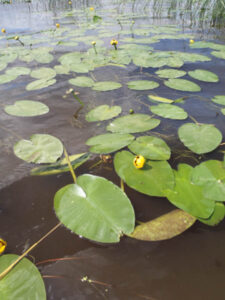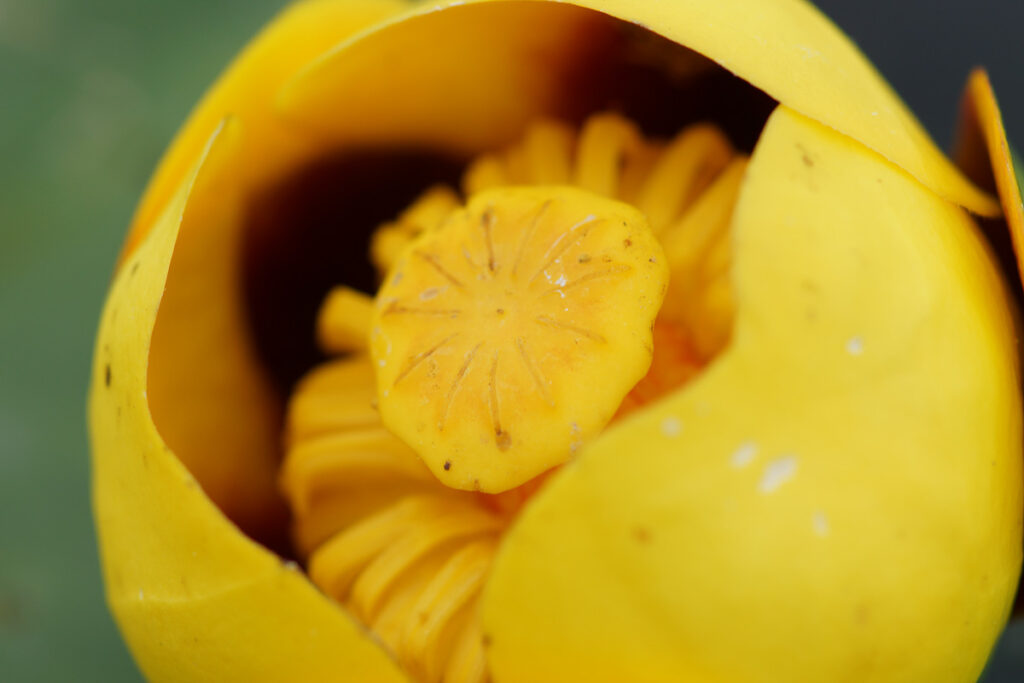
Other Name: Yellow Water-Lily, Bull-head lily, Yellow Pond-Lily
Synonym: Nuphar lutea
Family: Water-Lily, Nymphaeacea
Wetland Indicator Status: OBL
Spatterdock, (Nuphar avenda), sometimes referred to as yellow water-lily (which is actually a different species), can be differentiated between our other common species– white water-lily— when not in flower, by its heart-shaped leaves and stems more oval in cross-section. White water-lily leaves are more circular, as are their stems. All water-lily leaves have a cleft. Water lilies are some of those pretty “weeds” that most people like, or at least are more likely to tolerate. People tolerate and even love water lilies because they often hold largemouth bass, northern pike, and other gamefish. Lily pads are home to many species of insects, and later in the summer, you can see holes where they have been feeding. Water-lilies are sometimes confused with American lotus, which often emerges out of the water on its stalk, and its leaves have no cleft. Water-lilies are not related to true lilies.
Muskrats and American Beavers consume the thick rhizomes (roots) of spatterdock, which resemble tubers and look like long pineapples. Some Native American tribes ate the rhizomes, and the Iroquois hung dried up rhizomes to keep witches away. The roots and other parts of this lily were used in folk medicine to treat various ailments.

